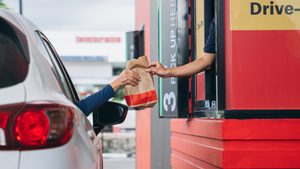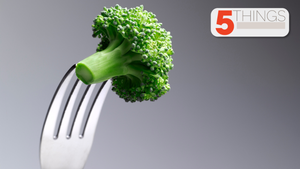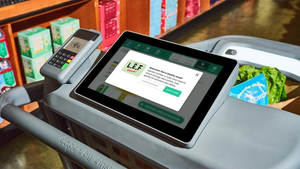Devising a Digital Game Plan
For grocers, online retailing is more of a defensive play; but that will soon change for those that can integrate effectively.
January 1, 2018
Online grocery sales have been ramping up for the past five years, and 2017 promises another year of double-digit growth. As consumer adoption continues to escalate, retailers are seeking another point of differentiation in a segment that seemingly has unlimited sales and earnings potential.
Amidst all the hype, online grocery has reached something of a watershed moment. Quality and freshness remain major obstacles to growth, and integrating digital offerings with physical stores into some type of click-and-collect model is a prerequisite for success.
Some industry observers question the major investments needed to be made by retailers in the digital world, unsure about its long-term viability. As one retail analyst asks, is it simply a case of The Emperor’s New Clothes? While online retailing may be glamorous, it is estimated that online grocery sales still grew at half the rate of discounters like Aldi and Lidl, which do not have online strategies, suggesting that consumers value lower prices over home delivery.
One of the major concerns consumers have with buying groceries is quality and freshness. These concerns have impacted online buying decisions and many consumers still prefer to shop at brick-and-mortar locations for items like produce and other fresh foods.
However, most observers are overwhelmingly positive about the future. It is estimated that online grocery sales will generate $24 billion this year, up from $17 billion a year ago. The gain is largely attributable to click-and-collect options by major retailers like Kroger and Walmart, creating a shift from small purchases online to larger basket sizes.
A recent report from the Food Marketing Institute and Nielsen projects that online grocery spending could reach as much as $100 billion, or 20 percent of total dollar grocery purchases by 2025—the equivalent of 3,000 grocery stores.
In its annual Grocery eCommerce Forecast, Unata, a Toronto-based developer of online retail platforms, in partnership with Brick Meets Click, a consulting and retail advisory firm, suggest that 31 percent of U.S. consumers are likely to shop online for groceries this year, compared with 19 percent in 2016.
Furthermore, repeat business, a strong indicator of a successful sales strategy, will be up sharply with 80 percent of respondents who have bought groceries online doing so again, while 68 percent would likely switch grocers for a better online shopping experience.
“Online grocery sales is inherently something U.S. consumers want and need,” says Diana Shaheen, director of retail insights for Kantar Retail. “This is the engine on the train that can’t be stopped the momentum is so great. It’s something that will help stores evolve and I would expect to see online getting to 20 percent of total sales within the next 10 years.”
Though it could be sooner.
“If Walmart, Kroger and all the major players introduce a click-and-collect model at a rate of one or two stores a day, adoption will be quick and we could hit 20 percent in five years,” she says.
Observers say the anticipated increase is due to the fact that online grocery has moved from being a differentiator to an essential part of the business. “Not only are shoppers turning to digital for their grocery shopping needs, but once they try it they’re likely to keep using it,” says an official from Unata. “They also expect a lot more from the online shopping experience and will flock to retailers that do it best.”
However, there is no silver bullet when it comes to online.
“Click-and-collect is only part of a broader ecosystem that includes being an informational resource, direct ship to homes and in-store assistance,” says Matt Sargent, senior vice president of retail for Frank N. Magid Associates, a research-based strategic consulting firm. “All four will be incredibly important to the online grocer. A combination of all of them will be key for retailers to see where they fit in.”
As the breadth of features such as curbside pick-up, home delivery and shopping list builders offered by retailers in a given market grows, so does the pool of shoppers who will find something they like about it and use the services, Unata analysts say.
The question is not only how well a retailer does online, but also the quality of that experience. Timely delivery is incredibly important not only in pre-purchase decisions, but also in the consumer’s decision about repeat sales.
“At the end of the day it’s not really about online grocery. It’s simply about logistics,” says Shaheen. “If there’s one thing most retailers are good at it’s figuring out logistics.”
In that regard, several names are top of mind. AmazonFresh, Peapod by Stop & Shop, FreshDirect and now Walmart, whose acquisition of Jet.com—a move that brought one million SKUs to its website along with more than 200 million unique visitors—foreshadows major changes in the way they are handling their online business.
“Walmart’s acquisition of Jet is the elephant in the aisle,” says Craig Rosenblum, senior director at Willard Bishop Consulting. “This strategic acquisition not only sends a clear message to Amazon, it enables Walmart to leverage its physical stores and its distribution assets. In a positive way, the acquisition is an admission by Walmart that they can’t compete with Amazon simply by using internal resources.”
A new way of thinking
Unilever’s acquisition of Dollar Shave Club shows how manufacturers are thinking outside the box and seeking more ways to engage with shoppers. “Retailers have to figure out the business models that are different enough from themselves so they can learn from them, but similar enough to their core business to apply what they’ve learned,” says Shaheen, noting that this is what Kroger wanted initially when they went after Harris Teeter. “But now is the time to fill in learning gaps through acquisition or personnel that have a perspective outside of grocery.
“The reason Peapod has done such an interesting job is that they stopped hiring grocery people and began hiring people from the apparel business, where the online evolution is so much further ahead,” adds Shaheen. “So 2017 will be the year we hire different people to extend the platform into true retail merchandising or acquire a company that can do it for them like MyWebGrocer. Their sole business is to make websites look and feel like stores.”
Albertsons is one of the companies moving to fill the knowledge gap. The chain recently appointed Narayan Iyengar as its senior vice president of digital marketing and e-commerce, responsible for the chain’s overall e-commerce strategies including home delivery. Iyengar, who came from the Walt Disney Co., is a 20-year veteran of e-commerce and digital business transformations. His appointment represents a major commitment by Albertsons to expand and enhance its digital footprint across 19 different retail banners nationally.
Another strategy is to hire outside delivery assistance from companies like Instacart. Schnucks, which operates about 100 stores in five Midwest states, is placing the emphasis on one-day delivery. The chain is partnering with Instacart for online ordering and delivery along with other retailers in the St. Louis market including Straub’s, Shop ’n Save, Whole Foods, Costco and Petco. Beginning in February, customers began accessing the service at Schnucksdelivers.com.
With a minimum purchase of $35, Schnucks Delivers charges $5.99 for two-hour delivery or $9.99 for one-hour delivery. For orders under $35, two-hour delivery costs $7.99. Customers also can pay an annual fee of $149 for unlimited deliveries, or $14.99 a month.
However, some question the long-term value of outside firms like Instacart. “The industry may not need a middleman now that retailers decided it is time to control their own destiny in the space beyond Amazon,” says Shaheen. “You’re going to see retailers realize they don’t need another brand between them and their shoppers. Once that happens the need for Instacart will decrease drastically. You will have a few delivery players in specific markets sticking around for small regional players who don’t have the means to do this on their own.”
The long game
Chasing Amazon in the online grocery space is a popular activity, but opinions are mixed on whether it is worth the time. Some say most retailers do not have to out-invest or beat Amazon—just outperform their weakest competitors. Several factors are accelerating Amazon’s impact on the grocery business. At the forefront is the normalization of the online transaction.
“Shopping is largely female dominated and initially they were hesitant, but all that’s changed,” says Sargent. “Mobile technology and the fashion business led the way for the female demographic to be more disposed to online shopping. Companies like Target and Kroger, that depend on physical interaction, are at risk.”
Although Amazon has yet to achieve success in grocery, underestimating its long-term impact would be a fatal mistake, say observers. “You’ve got to be several steps ahead of Amazon and overreact to what they’re doing,” adds Sargent.
He points to Best Buy as an example. By being proactive—even over reactive—the electronics retailer thrived in the online space, despite strong competition from Amazon. “If you wait for the threat to materialize the way Staples and Office Max did, then it’s too late,” he says. “Once Amazon establishes momentum it’s difficult to turn that tide.
“Grocery is a long haul business for Amazon,” Sargent adds. “They wouldn’t be investing in physical stores if it wasn’t. Grocers have to get on top of it or they might find themselves in the position of Office Depot or Office Max.”
However, observers say Amazon should not be the focus of the supermarket industry’s online efforts. “Everyone, including Wall Street, wants the industry to follow the Amazon model, but retailers understand they don’t need it and though their model might be different—it’s working,” says Shaheen. “The people in the industry who get it have decided not to chase Amazon. They pay attention to them, but the AmazonFresh model will take more time to impact their business.”
For example, Kroger is much more interested in what happens when Lidl enters the market. H-E-B is one of the large regional players that, on its own, has figured out how to make online grocery work. It may not be sexy, but it is functional and through it, the company has developed a relationship with customers instead of just being another retailer.
And, despite all the publicity surrounding online retailing, it might be best for some grocery retailers to walk away and not even try to compete. “It’s about knowing where your point of differentiation is as a retailer,” adds Shaheen. “Some retailers just don’t have to be followers. Wegmans is one that comes to mind. Every mom and pop store isn’t going to do online grocery because they can’t. But as Boomers age out and don’t have the same mobility and Millennials drive the need for convenience, everyone values the convenience stress components of online shopping. It is more about using the service as a relationship builder and a loyalty driver than anything else.”
SNAPing up sales
Once upon a time, retailers thought online grocery sales were for higher income shoppers or time-crunched consumers looking for convenience. But an entirely new customer base is coming to the forefront with the U.S. Department of Agriculture’s program to make online grocery purchases available to food stamp recipients.
The two-year pilot program, stemming from a mandate in the 2014 Farm Bill, could conceivably be expanded to the 44 million people who participate in the federal government’s Supplemental Nutrition Assistance Program (SNAP).
For now the initial pilot includes seven retailers in seven states: Amazon in New Jersey, Maryland and New York; FreshDirect in New York; Hart’s Local Grocers and Dash’s Market in upstate New York; Safeway in Washington, Oregon and Maryland, ShopRite in New Jersey, Maryland and Pennsylvania and Hy-Vee in Iowa.
USDA says it is confident that additional retailers representing a variety of store formats will be brought on once the system is “operating as required and consumer usage has been gauged.”
However, industry observers note that about half of all SNAP dollars—amounting to an average of $125.50 monthly—are spent at stores like Walmart, which is not part of the initial pilot.
Proponents of the online purchasing program say it could go a long way toward solving the problem of food deserts in certain areas, an issue that the retail industry and local activists have been wrestling with for some time. It will also address the needs of the elderly and disabled customers that lack mobility or are in areas that do not have consistent public transportation.
About the Author
You May Also Like




